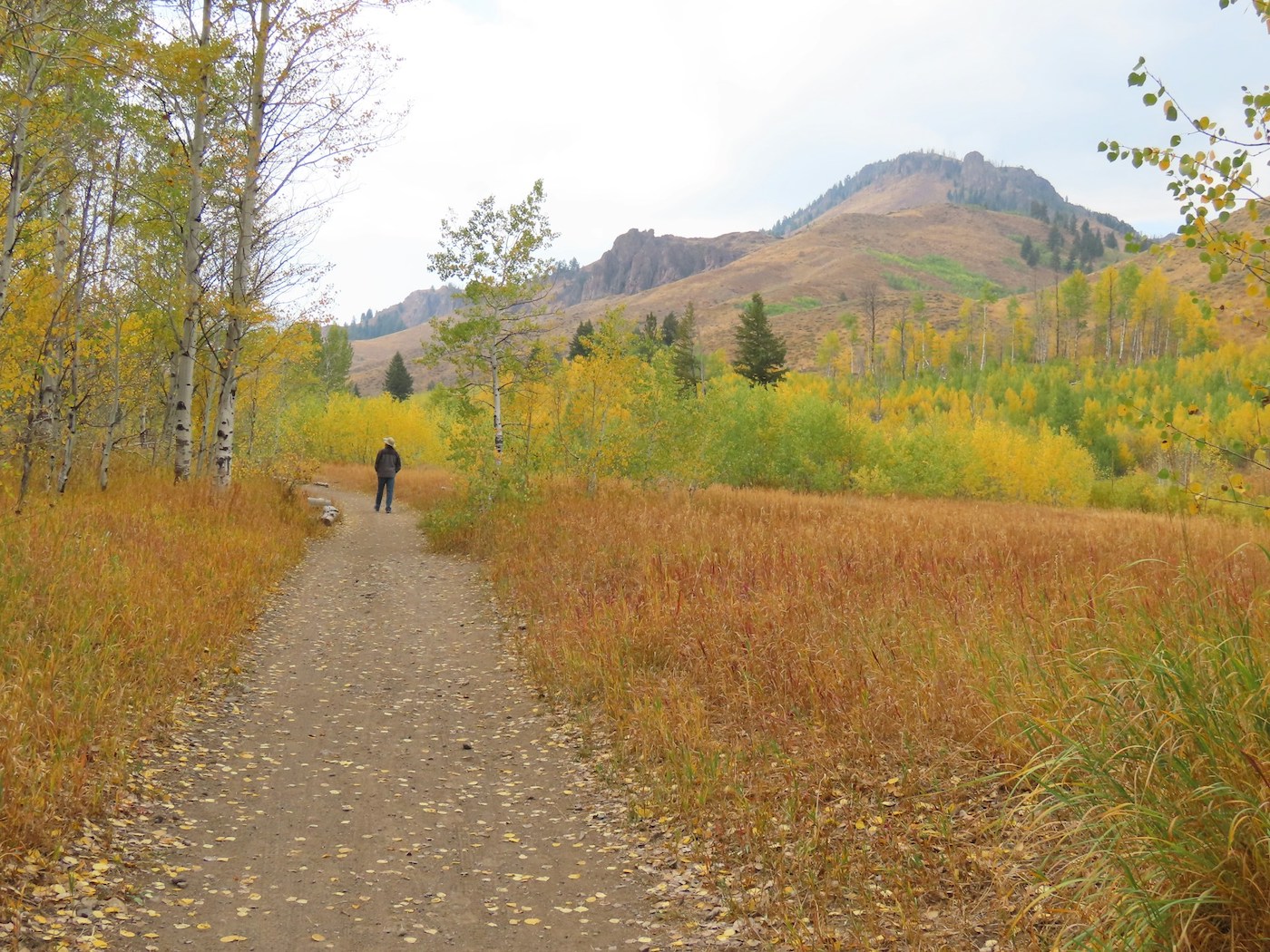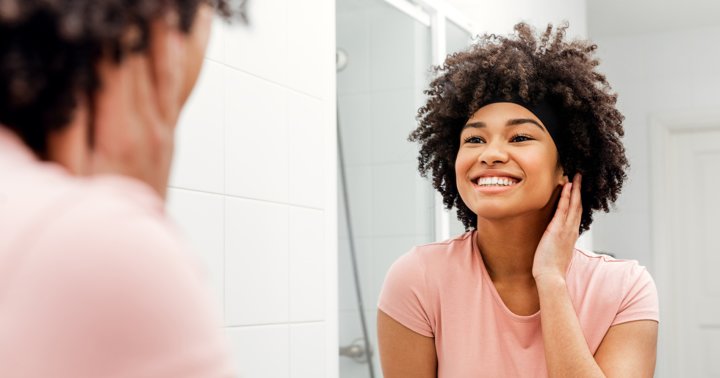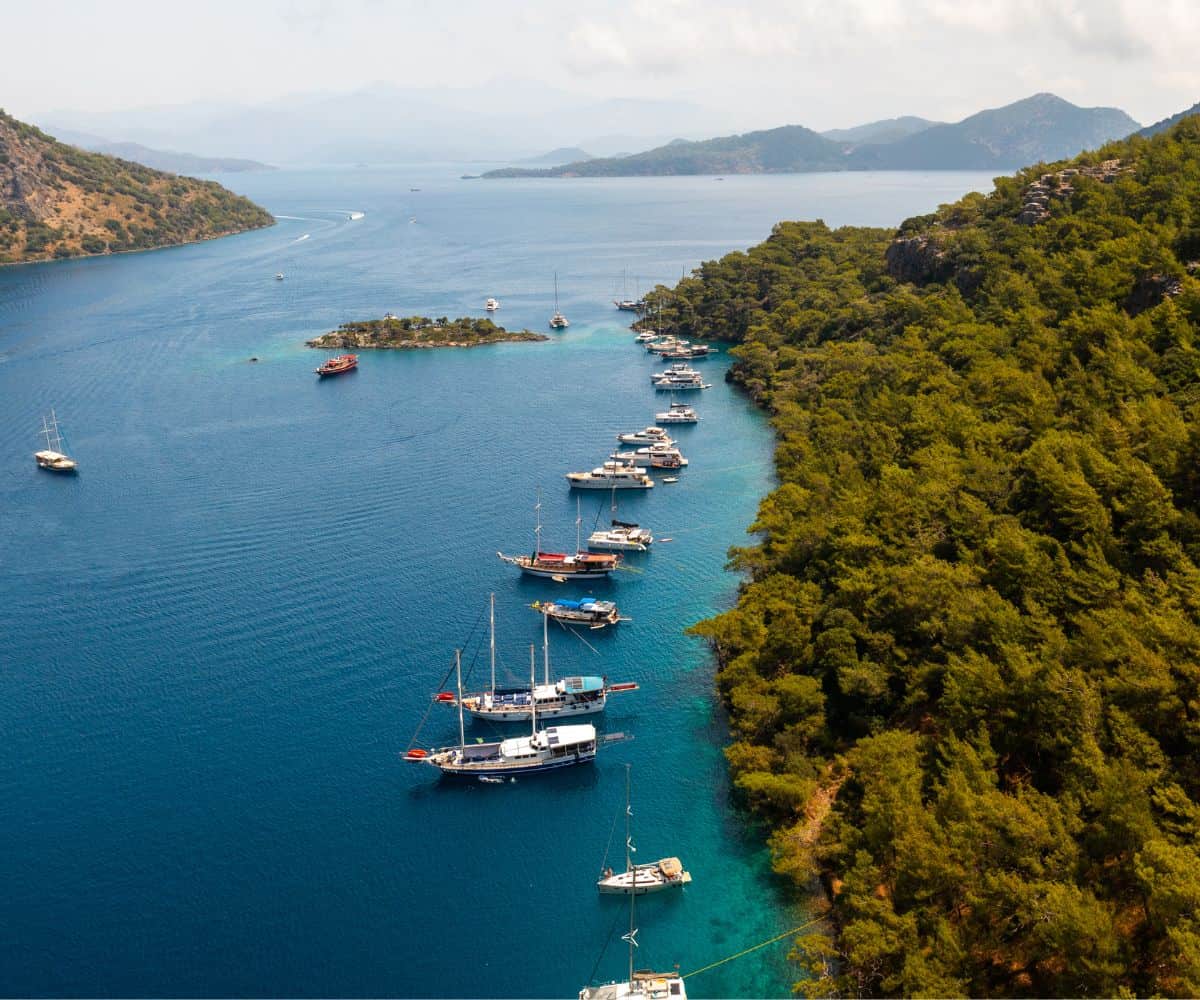Practice at Your Own Peril
On a retreat, a practitioner receives a hard lesson on heedfulness and humility. The post Practice at Your Own Peril appeared first on Tricycle: The Buddhist Review.

After three failed attempts—twice due to COVID, once because of sciatica—I was finally on my way to my first nine-day meditation retreat at Spirit Rock Meditation Center, bags packed, armed with a photo of my requisite negative COVID test.
My husband Jim dropped me off at Burbank Airport—which was only fifteen minutes from our house and extremely convenient, in theory. Yet before long, a baggage handler at the airport pulled me aside. “We have a problem,” he said. “This ticket is for LAX.” Fortunately, at Burbank, there was a ticketing clerk near the baggage area and this particular saint found me another flight to Oakland leaving half an hour later. I could have wept with gratitude.
I arrived in Oakland and was picked up by a moonlighting Uber driver, Luis, who delivered me to the Spirit Rock retreat center. I had finally arrived—I had to pinch myself. It was a beautiful spot nestled in the hills above Marin County, surrounded by evergreen trees. All the buildings were tastefully designed out of redwood. It was a lovely, bucolic spot, although a bit dried out from the ongoing drought. The air was crisp and clear. I took a deep cleansing breath.
As part of the program, everyone was given chores. I was assigned dishwashing with two other women and given careful instructions about using the machinery mindfully to avoid losing a limb. Closed-toe shoes were required in the kitchen area at all times: Check.
As I walked up to the office to get my room assignment, I briefly chatted with my fellow dishwasher, Elaine—a slim woman in her 40s. We had been told that we were to start the retreat’s mandatory noble silence period. But I couldn’t help pointing to a sign indicating a trail. It had pictures of snakes and poison ivy and announced: “Trails are steep and can be slippery. Enjoy at your own risk.” Elaine said, slightly ominously, “If you go on a hike, never take your eyes off the trail.” I imagined rattlesnakes lying in wait, ready to pounce.
Next, I got my room assignment. The building I was staying in was called Karuna, which means compassion. How perfect. Then I was given the opportunity to hand in my phone. I was told there will be a formal renunciation ceremony of all cell phones the following day, which, even if I gave up my phone tonight, I could still participate in.
Then, I was told to go to the meditation hall to claim my spot. From my experience at previous retreats, I knew that this was very important, as this would be your spot for the rest of the retreat. There were rows of cushions and zafus and then rows of chairs. I opted for a chair, as there was no way I was going to sit for forty-five minutes cross-legged on a cushion. I saw that some folks had already staked out their territory with folding benches, three or four different kinds of cushions, etc.
After dinner we all gathered in the meditation hall and met our teachers. Joseph Goldstein, who was the main reason I wanted to come to this retreat, would be joining us once a day on Zoom and giving a dharma talk. Not ideal, but better than nothing. Luckily, the other teachers were all well-qualified. They let us know what was expected of us. Noble silence. No talking unless absolutely necessary. Kindness and respect toward one another. We were here to meditate.
This was not a psychologically therapeutic environment. When we met with the teachers, we were not to bring up personal problems. We were here to learn and ask questions about our meditation practice. We were told to not do any journaling or reading. We were told that we will remember what was important.
We chanted the five precepts: I will abstain from killing, I will abstain from taking what is not given, I will refrain from sexual misconduct, I will abstain from false and harmful speech, I will refrain from intoxicants. (I have brought some Xanax, just in case.) I felt virtuous. They guided us in a brief meditation, and then, we all went to bed.
As I tried to fall asleep, I repeated a mantra I learned from Thich Nhat Hanh: “I have arrived, I am here. I have arrived, I am here.”
Day one was over.
***
After a restless night, I was awakened by the sound of the 5:45 a.m. bell and people tromping up and down the stairs. Day two had begun.
We started the day with the phone-renouncing ceremony. We solemnly walked to the podium, put our phones in a big bowl—or in my case, I pantomimed putting mine in the bowl—and then bowed to the teachers. We were given meditation instructions to focus on our breath. In out, in out. It was a slog. I was tired and restless. Sitting still for forty-five minutes without moving was tough. We were then given quite stern and precise directions about walking meditation. The teacher explained that it was one of the Buddha’s key instructions on how to meditate. We were to find a ten-to-twelve-foot piece of walkway and walk backward and forward, repeating silently to ourselves, “Stepping, stepping, stepping,” and then graduating to “Lift, move, place,” as we put each foot down. It was actually quite challenging to stay focused and not wobble and become unbalanced. But after all that sitting, it was also quite a relief. Unsurprisingly, there was a bit of a jostle to find a shady secluded spot in which to do your thirty minutes’ worth of walking.
Before lunch, we were given instructions on how to eat mindfully. Eat slowly, try at the end of each mouthful to return your utensil back to the plate before you take your next bite. Appreciate where the food has come from, who grew it, the cooks who made it. Savor the flavors and textures. It was actually an enjoyable and soothing process. At 1:15 p.m., promptly, I had to show up for my work detail. The whole process took about forty-five minutes and was quite rewarding—the satisfaction of a job well done. Then, back to the routine of sitting and walking meditations, dharma talks, and so on.
We met in small breakout groups of six with certain teachers. Elaine, my dishwashing pal, mentioned that she had been involved in a tragic accident and she had to relearn how to walk. The walking meditation was difficult, as it reminded her of her rehab. Another man burst into tears, talking about how focusing on his thoughts made him think about his perceived lack of self-worth. Finally, an older man, Michael, told us that in April, he was diagnosed with stage four bile cancer, which had metastasized, and that he was probably going to die. He had been meditating for twelve years and going on retreats, but this time, it was different: It might be his last retreat. He was 62 years old and looked pretty healthy. He said that in addition to trying to be present for whatever thoughts might be arising—anger, frustration, and sadness—he worried for his wife, having a life without him. Nonetheless, he was looking for more moments of joy and appreciation for what he still had. And finding them. He was so direct and honest. We were all visibly moved and sniffling. He said the good news about cancer is that everybody is so nice to you. We laughed.
On the third day, Winnie [Nazarko] gave a hilarious talk. She said this was the day of dukkha—or suffering. The day where you wondered why you had spent all this money to come here and suffer, when you could have gone on vacation. What was the point? Everybody was annoying you. The people that kept moving and making noise. The people who had stockpiled cushions but weren’t even using them and sitting on chairs instead. What was the point of it all? In fact, maybe if they fell on a trail or became ill and had to leave in an ambulance that might be a welcome relief. We were all weeping with laughter. All these thoughts were so recognizable. Then, of course, she gave us encouragement and instructions on how to overcome our aversion and craving.
In the meditation hall, there was a bulletin board with a map of all of the trails around the center along with directions. There were red whistles on strings that you were encouraged to use if you were planning to hike alone. It was a little off-putting. I had a meeting with one of the meditation teachers, and I told him about my compulsively active mind that wouldn’t calm down, and he suggested that I go out in nature. I told him that all this info about the dangers of hiking made me nervous, but he reassured me and said he had hiked all over the property without mishap. I would be fine.
I figured out the only time when it was cool enough to hike was either early in the morning or after dinner. Map and water bottle in my backpack, I decided to attempt the Middle Loop trail. It was a steep climb, and then there was a fork in the path, and I was consulting my map when a woman came up behind me and asked if I knew which direction to go. Feeling a bit naughty about breaking noble silence but also feeling the situation justified it, I shared my map with her. A young man came up beside us, and the woman asked him if he knew which way. He drew his fingers across his mouth indicating he couldn’t talk. As he strode purposefully past us, the woman said, “What a jerk!” I laughed. Probably not wise speech. Eventually, we figured out where to go, and when I got to the next intersection, I waited for her so she would know what direction to go in. She put her hands together to thank me. It was a lovely trail, with beautiful views that then entered a cool wooded area that led back to the meditation center. It became my go-to trail. And I would do it every morning after breakfast.
***
On Friday, the seventh day of the retreat, it was still quite hot, but I decided that maybe I would attempt a trail called the Great Loop. You passed the turnoff to the Middle Loop and kept going. It was a steep and twisty trail, but the views were spectacular. I arrived at a rock where there was a little Buddha statue. A woman was sitting there, and so I asked about the trail, and she said it took about one hour and a half to get back to the meditation hall. She told me that I had done about a third of it. I looked at my watch. I would probably miss the first sit, but what the heck—in for a penny, in for a pound. I pushed on.
The sun was rising, and it was getting hot. The trail was steep and intense, but I had my water bottle and map, and I felt good that I was challenging myself. I would be able to tell people I had done the Great Loop! Pride. Mana, one of the five poisons.
But it was a tough trail, and I was getting out of breath. I would head for the next piece of shade, pause, catch my breath, and continue. I passed a couple walking their dog. They confirmed I was on the right trail. “Just make sure that when the trail divides, you go to the left,” they told me. I thanked them and kept going. The trail divided, and I thought, “Phew, I’m on the home stretch.” What I didn’t realize was how steep the descent was going to be. Elaine’s words rang out in my ears, “Watch the trail closely!”
I started my descent. I took small steps. I zigzagged. But the ground was dry and crumbly. Very slippery. I kept going, very gingerly. And then I fell. And I heard a snap. I had a queasy feeling in my stomach. I knew something was wrong. I managed to stand. There was a sharp pain in my left foot. “Shit,” I thought, “I have twisted my ankle.” I staggered along some more and fell again. More pain. I looked down at my ankle. It seemed OK, sort of. I rubbed it. I stood up, stumbled along, and fell again.
“This is not good,” I thought.
I remained sitting down. What else was there to do? I was about half a mile from the end of the trail. I was in the middle of nowhere. No one knew that I was on the trail, except the first woman I had met, and we hadn’t even exchanged names. There were a hundred people at the retreat, and no one was keeping tabs on anyone. It could be days—well at least a day—before anyone would notice that I was missing. My foot was starting to hurt after the repeated falls. But I had to go on. I had no choice. At least I had made it into a wooded area and the sun was not beating down on me anymore. I finished the last of my water. I stood up and limped on. A couple of minutes later, I fell again and felt a searing pain on the inside of my left foot. Fuck! How was I going to do this? But here’s the thing: I didn’t panic, I didn’t cry. I just thought, “I have got to figure this out.” I can only attribute this to all the meditation I had been doing. I was strangely calm.
I got up again, walked a few more steps, and fell again. Then I remembered Sebene [Selassie], my mentor, talking about a hike she had been on where she fell and she started scooching down the trail on her bum. So I scooched. Not very elegant, but it worked and I was more stable. Finally, I could see the meditation center, but it was pretty far away, and even if I had screamed, no one would have heard me. By this time, they were all in the meditation hall. I should have brought the whistle. At least I was in proximity to humanity. The trail became flatter, but it also curved away from the hall and went slightly uphill, before going downhill to the retreat center. I was in pain but on the home stretch.
I staggered into the retreat office and explained what had happened to me. The office manager, Max, inspected my foot and said, “Well, at least you can wiggle your toes: That’s a good sign.” They gave me an ice pack and Advil and contacted one of the retreat support staff, Greg. He told me my options. He could take me to urgent care, but they did not do X-rays, or I could go to the ER, where they could do an X-ray. I decided my best option was to go to the ER and find out exactly what was going on with my foot.
The ER in Marin County was very pleasant, clean, and not crowded. They took all my info, and, because we had forgotten my phone, Michael had to wait with me. I meditated. I mean, what else was I going to do? After about an hour, a nurse saw me. She kept asking if I had hit my head when I fell, and I realized how incredibly lucky I was. If I had hit my head, I would probably still be out there. They took an X-ray. Then another waiting period, with more meditating, before I was seen by an associate doctor. She said my ankle was clearly badly sprained, but she was more concerned about a fracture in my tibia (that snap that I had heard), saying that I might need a splint and possibly surgery. I kept hoping it had been a broken branch, but no, it was a bone in my calf.
The associate had to consult with the orthopedic doctor, who was on call. More waiting, nervous meditating. Finally, the doctor came back and said she had spoken with the orthopedist, and, although my ankle was badly sprained, he deemed it stable enough. As for my tibia, it was just a hairline fracture and therefore would not need a splint. They were going to put me in a boot to stabilize the situation and send me on my way. But—and she was very emphatic about this—no hiking or walking up steep hills. I was told to keep my foot elevated, ice it as much as possible, to take Advil, 600 mg, every six hours or as needed, and to see an ortho when I returned to LA. Not great, but manageable.
The first arrow is the suffering of the original event, the second arrow is the piling on top of it, making it worse.
I got in the car with Greg and started ruminating. “Why did I not take the Middle Loop? I mean, wasn’t the whole Buddhist philosophy about taking the Middle Path? Why did I go on the Great Loop? Why didn’t I turn back?” And on and on. Greg gently reminded me, “You’re adding the second arrow, this is not your fault.” And he was right. The first arrow is the suffering of the original event, the second arrow is the piling on top of it, making it worse. Papancha.
As I was limping toward the hall to sit, I ran into Elaine. She took one look at my foot and said, “You poor thing!” and gave me a hug. She asked if it hurt, and I said it actually wasn’t too bad. She said, “You’re going to be fine.” I asked if she wouldn’t mind telling me what had happened to her. She said she lived not far from Spirit Rock, and she was on a trail and fell and dislocated her foot so badly that it was literally hanging from her leg. Fortunately, there was a man on the trail who managed to get her help, and she had to be helicoptered from the trail to a hospital. She said she had to have many operations and has seven pieces of metal in her foot, but now she’s fine. And she said, “I hope you don’t take this the wrong way, but your situation could’ve been much worse.” I thanked her for sharing her story, just as the rather severe teacher walked past and hissed, “No talking. We’re in noble silence!” completely ignoring my boot as I limped past her.
Well, suffice it to say I’m glad I stayed. It was challenging, but I learned a lot. On the evening of the last day, I saw Michael, the one with terminal cancer. I told him I was leaving before we officially broke silence on Sunday morning. I said it was an honor to have met him and I wished him well. He hugged me, and then he kissed his hand and leaned down and touched my foot. And I kissed my hands and touched his neck. I limped off, tears streaming down my face.
At Joseph’s final talk, someone asked him what his main lessons were from his years of meditation. He said, “Lighten up, simple and easy, and don’t waste your suffering. And, anything can happen…”

 Koichiko
Koichiko 























.jpg&h=630&w=1200&q=100&v=154b70b92d&c=1)







